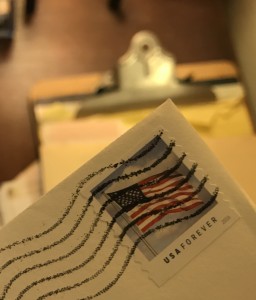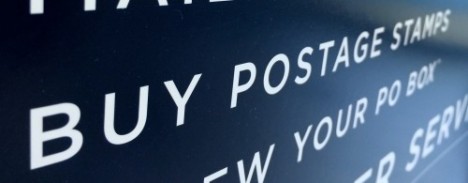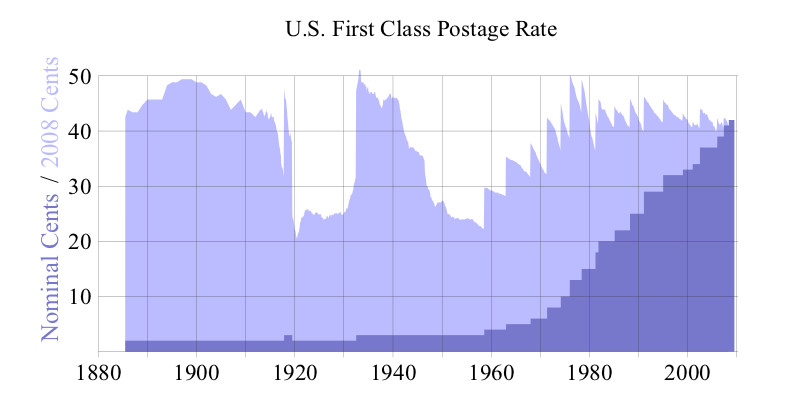“Be like a postage stamp. Stick to one thing until you get there.”
― Josh Billings, 19th-century American humorist
Effective 1/27/19, the United States Postal Service (USPS) has made changes to the price of a stamp. While some decreases can be found, the big change came in the largest-ever stamp price increase in history. And some prices have seen no changes at all. Read on for a complete guide to the price of a stamp and other postage increases 2019!
USPS Postage Price Changes – At a Glance
- Mailing Services Products – approximate increase of 2.5%
- Priority Mail Express – approximate increase of 3.9%
- Priority Mail increased approximate increase of 5.9%
Stamp Prices Are Low – An Overview
The USPS reportedly has some of the lowest postage rates in the world and offers competitive rates for shipping. The USPS, unlike other carriers, does not add extra fees for things like fuel, residential delivery, weekend delivery, or holiday season delivery. In addition, seeing zero tax dollars for operations, it subsists solely on sales of postage, products, and services to support its entirety. Before we get into the new prices, to whet your appetite, here are a few other USPS facts:
- 493.4 million mail pieces are processed each day
- That is 20.6 million each hour
- Per minute, 342,638 are processed
- And 5,711 mail pieces are processed every second
So, when you send your grandmother a letter letting her know you’re doing just fine, and yes you did get that $5 she mailed last week (thanks, Oma!), that’s factored into these statistics. When you sell your DVD boxset of The Nanny on Ebay because you have a digital copy now, and you ship that on to Utah, that’s another tick on the ol’ USPS fact sheet. When your hand has uncramped enough to finally get around to physically mailing out those thank you notes from your graduation party six months ago, those too are included in the 493.4 million mail pieces process each day!
Price Increases for First Class Mail
Here’s a recap of what First Class Mail gets you, at just the price of a stamp:
- Best priced service for mail up to 13 oz
- Delivery in 1 to 3 business days
- Insurance for loss or damage up to $5,000 for merchandise only
- Can combine with extra services to confirm delivery
- Up to 3.5 ounces free with commercial priced letters and cards
Changes to Price of a Stamp for Letters and Postcards
With the 2.5 percent price increase for Mailing Services products, the most notable of the new rates is a five-cent increase to the price of a First-Class Mail stamp, from 50 cents to 55 cents. The 10 percent hike is the largest price increase in the history of the USPS. The second largest price hike was in 1991, when the price of a stamp increased from 25 cents to 29 cents.
Even though the basic 1-ounce price of a stamp went up, another part actually went down. The “additional ounce” price for letters will see a decrease of six cents, from 21 cents to 15 cents. Additional ounces cover anything that weighs more than 1-ounce which is typically a larger document or invitation. This means the 150 wedding invitations (typically a 2-ounce stamped letter) you need to send out may only cost 70 cents a piece, rather than 71 cents. And who doesn’t want to save $1.50?
Complete Pricing Breakdown
- Letters (1 oz.) $0.55
- Letters – Additional Ounces: $0.15
- Non-Machinable Surcharge: $0.15 (see below!)
- Letters (metered 1 oz.): $0.50 (metered mail is when a postage meter stamps directly onto the letter)
- Outbound (Outgoing) International Letters (1 oz.): $1.15
- Domestic Postcards: $0.35
Please note the base price of $0.55 is for a standard-sized, rectangular envelope. If your envelope is square, oversized, or unusually shaped, costs for stamps begin at $0.70. This factors in your non-machinable surcharge (see below).
In the same vein, stamps for standard-sized, rectangular postcards start at $0.35. Any oversized postcards require letter stamps, which as we’ve now learned, start at $0.55.
Complete Sizing Guide
Letters qualify under the following dimensions:
- Length – minimum 5”, maximum 11 ½”
- Height – minimum 3 ½”, maximum 6 ⅛”
- Thickness – minimum .007”, maximum ¼”
Cards qualify under the following dimensions:
- Length – minimum 5”, maximum 6”
- Height – minimum 3 ½”, maximum 4 ¼”
- Thickness – minimum .007”, maximum 0.016”
What is a “Non-Machinable” Surcharge?
If you have unusually shaped mail pieces – like uneven, stiff, square, or vertical envelopes – and the machine is unable to sort them into the correct pile, or if your mail has extras – like buttons, clasps, or string – it must be hand-cancelled (processed by a human being). These mail items are considered “non-machinable,” and a fee of $0.15 may be applied, even if they weigh less than the standard letter 1 oz.
What About Forever Stamps?
If you’re wondering about First-Class Mail Forever stamps – introduced in 2007 and designated for 1 oz letters that don’t expire even if stamp prices increase – they will still be available for purchase, but at the increased rate of $0.55. Forever stamps purchased before the increase on 1/27/19 will, of course, be honored.
Changes to Priority Mail Prices
First, here’s a quick recap of what the USPS Priority Mail service includes:
- Delivery in 1 to 3 business days
- Delivery available seven days a week in most locations
- Prices starting at $7.35
- Can combine with extra services to confirm delivery
Domestic Priority Mail Retail Flat Rate (Boxes and Envelopes)
In an attempt to simplify things, the USPS introduced the first flat rate envelope in 1991 and the first flat rate box in 2004. As their name indicates, there is a flat rate – a one-time fee – and no further weighing or calculating is needed. If they fit in the box, the price is locked and predictable. These ship in 1-3 business days.
| Box Type | Dimensions | Price |
| Small Flat Rate Box | 8 11⁄16″ x 5 7⁄16″ x 1 3⁄4″ | $7.90 |
| Medium Flat Rate Box (top loading) | 11 1⁄4″ x 8 3⁄4″ x 6 | $14.36 |
| Medium Flat Rate Box (side loading) | 14″ x 12″ x 3 1⁄2″ | $14.36 |
| Large Flat Rate Box | 12 1⁄4″ x 12 1⁄4″ x 6″ | $19.95 |
| APO/FPO Large Flat Rate Box* | 12 1⁄4″ x 12 1⁄4″ x 6″ | $18.45 |
| Regular Flat Rate Envelope | 12 1⁄2″ x 9 1⁄2″ | $7.35 |
| Legal Flat Rate Envelope | 9 1⁄2″ x 15″ | $7.65 |
| Padded Flat Rate Envelope | 12 1⁄2″ x 9 1⁄2″ | $8.00 |
*The USPS offers a discount of $1.50 per Priority Mail Flat Rate Box to those who want to send loved ones serving in the military a special delivery. Just look for the abbreviation APO – which stands for Air or Army Post Office – or FPO – which stands for Fleet Post Office (Navy).
A Note On First-Class Package Service and Zone-Based Pricing
First-Class Package Service, the light, fast service primarily used by businesses for fulfillment purposes will move to zone-based pricing. These zones are predetermined and factor the distance from where shipping begins to the package’s destination. According to USPS, this is to better align with the cost of service and is intended to improve value based on distance.
Concluding Thoughts on Stamp Price Increase
According to the New York Times, within the last ten years, the number of first-class mail pieces sent through the United States Postal Service has fallen by more than 50 percent. If you don’t include invitations and holiday cards, the average American household receives only 10 pieces of personal mail each year. Although the statistics presented earlier certainly seem staggering (5,711 mail pieces are processed every second?!), the fact of the matter is Americans just aren’t communicating the way they used to. And yet, a postal worker visits every mailbox several days a week, regardless of the volume.
One needs only to briefly visit the USPS website before discovering that, though the information is certainly helpful, it isn’t the most navigable or consumer-friendly. Perhaps if data was arranged in a one-stop, confusion-free way, folks would be able to move past the terms “non-machineable” and “automation,” and quickly reference whether or not their letter or package fits in a particular category, and how much that category costs. Yeah, someone should probably make that quick-reference…
So, here it is! Our Ultimate Guide to the 2019 Price of a Stamp.


